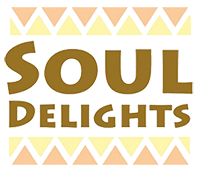A woman came to me recently in distress. She had just found out her son was allergic to wheat and was devastated that the great majority of her family’s diet would have to change. I knew that overwhelming feeling. When I had my recurring yeast infection issue I had to stop eating products with gluten, a mixture of two proteins found in some grains, including wheat. Many people cannot tolerate gluten, especially those with Celiac disease. Gluten may even be found in many foods that may not include wheat flour. This protein affects people in different ways, including causing skin rashes, nasal congestion, runny sinuses and hyperactivity in some children with attention deficit hyperactivity disorder (ADHD). When we found out that Nathaniel had a sensitivity and Justus was allergic to wheat, our entire family changed to my wheat and gluten-free diet (with a few exceptions). Because I was on this diet exclusively for some weeks and never returned completely to incorporating wheat and gluten, our transition was easier than it will be for most people who have to make a change. To help you or your loved ones not to be so overwhelmed, I share the following:
Alternative Grains
There are a host of prepared products, from cereal to snacks, that provide alternative ingredients to wheat. You can find some of these in the organic section of many grocery stores, but a natural food store is your best choice. Some I use are
Spelt—The government classifies spelt as wheat, but it is a different grain though the texture is similar. I know for sure it is different because my sons’ skin doesn’t break out when I use spelt flour like it does when I used wheat flour. I use spelt flour in all recipes that call for wheat or corn starch (Nate also has a corn sensitivity), including breads, cookies and gravies. I even developed a homemade pancake recipe with this that is delicious.
Rice (Brown or White)—I use rice flour like spelt but the texture is more grainy (even though I made a red velvet cake with this and had half my guests who ate the cake called to get the recipe). My family and I use rice pasta (spaghetti, lasagna and noodles) and bread. I make macaroni and cheese, lasagna and chicken and noodles with brown rice pasta. I even use the hot cereal that uses rice instead of wheat or oats (Yes, Nate has an oat sensitivity, too).
Sorghum—I haven’t used this flour in recipes, but just about every store-bought snack item (cookies, grain bars and brownies) that we buy uses this flour.
Sprouted grain breads—Even though these still have gluten, I found that they didn’t affect the children or me as much as regular grains. This may be because the sprouting process “breaks down amino acid protein bonds to promote digestibility of the entire grain.”
Tips
• Become a label reader. Most packaged foods use wheat flour.
• Know that God has given us everything we need for life and godliness (2 Peter 1:3), even in this sin-cursed world that has produced all types of allergies and other ailments that have resulted from the fall of man.
• Make changes gradually, if possible. Sometimes you can eliminate certain wheat and gluten-containing foods one at a time so your family doesn’t experience such a drastic change. If you must be drastic because not to do so would cause extreme harm to those who can’t tolerate the grain and protein, know that God’s grace is sufficient. This is not a spiritual platitude but a spiritual truth that will give you the strength and courage you need to make your necessary modifications.
Copyright 2011 by Rhonda J. Smith

